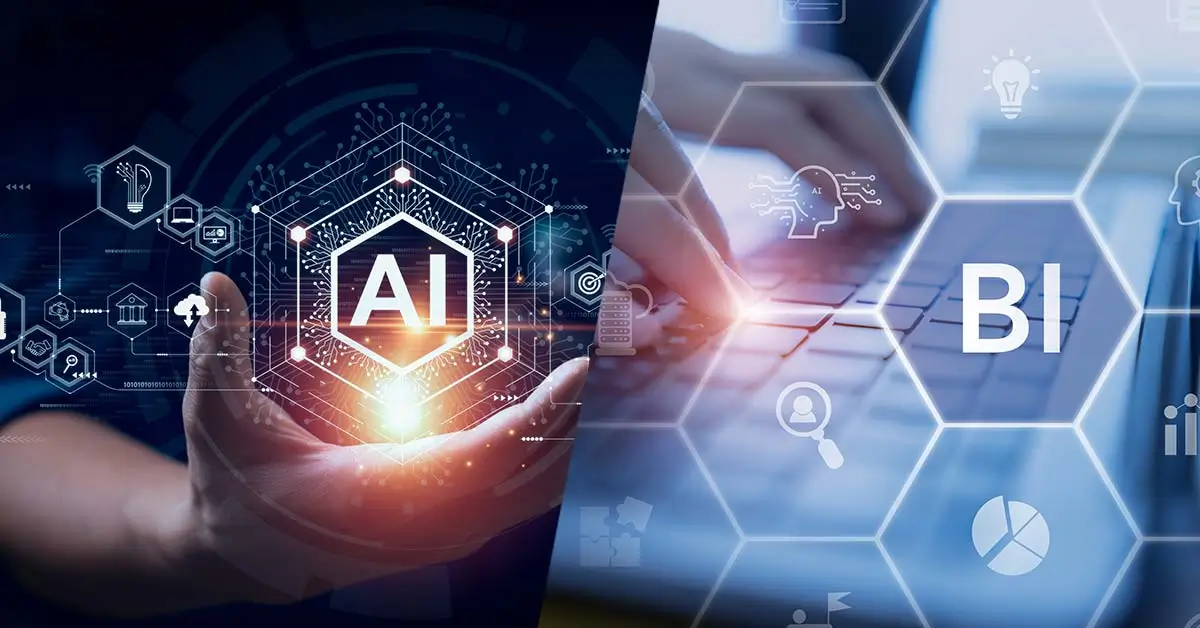Artificial Intelligence (AI) and Business Intelligence (BI) are two transformative technologies reshaping the landscape of modern businesses. In this article, we will delve into the definitions of AI and BI, their goals for businesses, differences, and future trends.
Introduction
AI refers to the simulation of human intelligence processes by machines, typically computer systems. It encompasses learning, reasoning, and self-correction. On the other hand, BI involves strategies and technologies used by enterprises for data analysis of business information to make informed decisions.
Understanding AI
Explanation of AI
AI encompasses a wide range of technologies, including machine learning, natural language processing, computer vision, and robotics. These systems can perform tasks that typically require human intelligence.
Types of AI
AI can be categorized into narrow AI and general AI. Narrow AI is designed to perform specific tasks, while general AI possesses human-like intelligence and can perform any intellectual task that a human can.
Applications of AI in Business
AI finds applications in various business domains, including customer service, marketing, finance, operations, and supply chain management. It helps businesses automate processes, personalize customer experiences, and gain insights from data.
Understanding BI
Explanation of BI
BI involves the use of software and services to transform data into actionable insights that drive business decisions. It encompasses processes such as data mining, reporting, querying, and data visualization.
Components of BI
The key components of BI include data warehousing, business analytics, data mining, dashboards, and reporting tools. These components work together to extract, transform, and analyze data from disparate sources.
Applications of BI in Business
BI enables businesses to monitor key performance indicators, identify trends, forecast future performance, and optimize operations. It facilitates data-driven decision-making at all levels of an organization.
Differences between AI and BI
Focus and Purpose
AI focuses on mimicking human intelligence to perform tasks autonomously, while BI focuses on analyzing historical data to support decision-making.
Data Usage
AI relies on both structured and unstructured data to learn and make predictions, whereas BI primarily deals with structured data stored in databases and data warehouses.
Decision Making
AI systems can make autonomous decisions based on learned patterns, whereas BI provides insights to humans, who then make decisions based on those insights.
Predictive Capabilities
AI can anticipate future events and outcomes based on historical data and patterns, whereas BI focuses on analyzing past and present data to identify trends and patterns.
Human Involvement
AI systems can operate with minimal human intervention once trained, while BI requires human analysts to interpret data and make decisions.
Goals for Business with AI and BI
Improving Efficiency
AI and BI technologies help businesses streamline operations, automate repetitive tasks, and optimize resource allocation, leading to improved efficiency and productivity.
Enhancing Decision Making
By providing actionable insights from data analysis, AI and BI empower businesses to make informed decisions quickly and accurately, reducing the risk of errors and uncertainties.
Gaining Competitive Advantage
Businesses that leverage AI and BI gain a competitive edge by identifying market trends, understanding customer behavior, and anticipating changes in demand, enabling them to adapt swiftly to market dynamics.
Increasing Customer Satisfaction
AI-driven personalization and BI-driven customer analytics enable businesses to understand customer preferences, tailor products and services to meet their needs, and deliver exceptional customer experiences, leading to higher satisfaction and loyalty.
Driving Innovation
AI fosters innovation by enabling businesses to explore new possibilities, develop novel solutions, and create disruptive technologies. BI complements this by providing insights into market trends and consumer behavior, facilitating data-driven innovation strategies.
Challenges and Limitations
Data Privacy and Security
The proliferation of data collection and analysis raises concerns about data privacy and security. Businesses must implement robust data protection measures to safeguard sensitive information and comply with regulations.
Integration Issues
Integrating AI and BI systems with existing IT infrastructure and workflows can be challenging. Businesses need to ensure seamless integration to maximize the value of these technologies.
Skill Gap
AI and BI require specialized skills, including data analysis, machine learning, and programming. Businesses may face challenges in recruiting and retaining talent with the necessary expertise.
Ethical Concerns
The use of AI in decision-making raises ethical questions regarding bias, fairness, and accountability. Businesses must address these concerns to ensure ethical AI practices.
Cost
Implementing AI and BI solutions involves significant upfront investment in technology, infrastructure, and talent. Businesses need to carefully evaluate the costs and benefits to justify the investment.
Future Trends
Advancements in AI and BI
AI and BI technologies will continue to advance rapidly, driven by innovations in machine learning, natural language processing, and data analytics.
Integration of AI and BI
There will be greater integration between AI and BI systems, enabling businesses to harness the combined power of predictive analytics and autonomous decision-making.
Emerging Technologies
Emerging technologies such as augmented analytics, edge AI, and quantum computing will further enhance the capabilities of AI and BI, opening up new opportunities for businesses.
Ethical AI and BI Practices
There will be a growing emphasis on ethical AI and BI practices, including transparency, accountability, and fairness, to address concerns related to bias and discrimination.
Conclusion
In conclusion, AI and BI are indispensable tools for modern businesses, offering transformative capabilities to drive efficiency, innovation, and competitiveness. By understanding the definitions, goals, differences, and challenges of AI and BI, businesses can harness their full potential to thrive in an increasingly data-driven world.


No comments yet